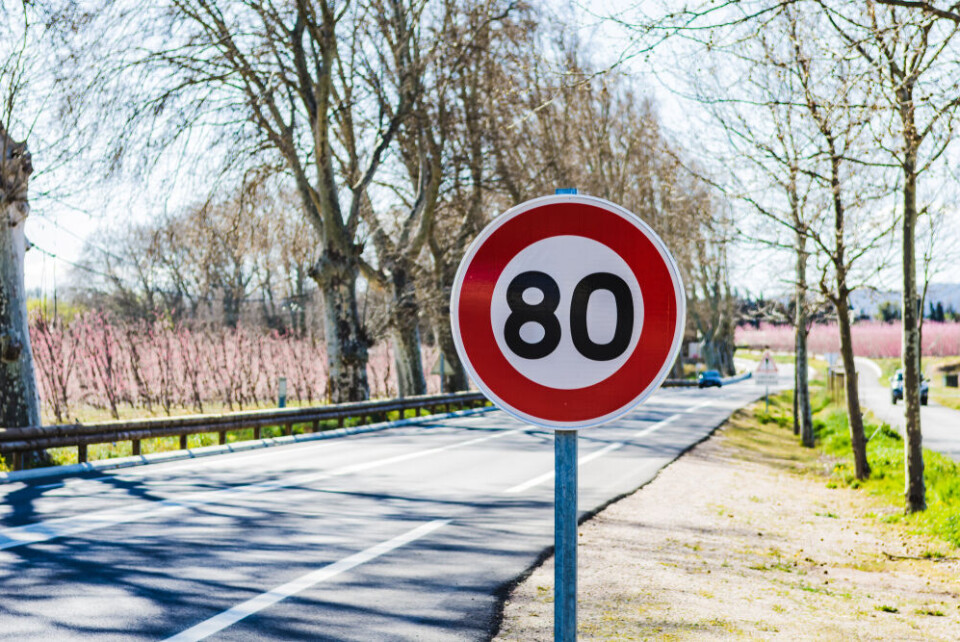-
Dates 2026: Family allowance payments and other French benefits
The payment date varies if it falls on a weekend
-
Dordogne villages suffer burglaries: How to protect your property
A series of break-ins have been reported over the Christmas period
-
‘It’s the place we are happiest’: George Clooney and family become French
‘My kids have a much better life [and] speak perfect French’, the Hollywood star says
80 or 90km/h? French speed limit changes continue to cause confusion
A driving consumer group says 90% of people it polled are in favour of putting the general route départementale limit back up to 90km/h

The majority of people in France would be in favour of returning all route départementale speed limits to 90km/h, a driving consumer organisation has claimed.
French speed limits on routes départementales – the principal roads between towns within departments – have for the last four years been moving between 80km/h and 90km/h.
In 2018, the French government decided to reduce the limit from 90km/h to 80km/h over 400,000km of roads without a central reservation – mosty routes départementales – in an attempt to reduce the incidence rate of fatal car accidents.
However, this was largely opposed, with protests by the gilets jaunes movement supported by some local councillors.
The state therefore decided to allow departmental authorities to decide whether or not to return to the 90km/h limit, and 37 of France’s 101 departments did so, at least on some routes.
However, this means that across different departments – and even within departments – there will be a mix of 80km/h and 90km/h speed limits which are not necessarily logical.
This creates confusion for motorists and puts them at risk of accidentally breaking the speed limit, it is claimed.
Some departments have even changed their minds on the return of 90km/h limits. This month, an administrative court in Montpellier undid the department of Hérault’s decision to reinstate the faster speed limit, after opposition from the Ligue contre la violence routière road safety body.
In contrast, in Isère, local authorities have just decided to raise the speed limit to 90km/h on 165km of roads.
Pierre Chasseray of the 40 millions d’automobilistes driver consumer group claims that nine in 10 people in France would be in favour of returning to a blanket 90km/h speed limit on routes départementales, according to an online consultation completed at the end of March.
The full results of the survey have not yet been published.
Préférez-vous : 80 ou 90 km/h ?
— Estelle Midi (@EstelleMidi) March 18, 2022
🎙"9 Français sur 10 sont favorables à un retour aux 90 km/h" prévient Pierre Chasseray, Délégué général de @40MA. #EstelleMidi 🕛 pic.twitter.com/mjn7yUbPiE
Speaking on the RMC radio network, Mr Chasseray said: “A speed limit is a maximum authorised speed [...] which means that you must not drive at that speed. You must be mostly below, to ensure that you never go over.
“When the speed limit was 90km/h, the average speed observed was somewhere between 82 and 83km/h.
“Today, with an 80km/h speed limit, the average speed is still between 82 and 83km/h. It hasn’t changed anything.
“You have a proportion of the population who respect the law, and they’re right to do it, even if they are not happy about it. So, they travel below [the limit], around 75km/h. And then you have others who will judge that this is a very low speed and who will take a risk and overtake.
“You will therefore see dangerous driving behaviours. We need to find a speed limit which is high enough that people do not want to break it and that is also safe enough.”
How can I tell if the road is 80km/h or 90km/h?
Benoît Hiron, who leads the safety department at CEREMA (Centre d’études et d’expertise sur les risques, l’environnement, la mobilité et l’aménagement), told France Culture that the “80km/h rule applies to the whole network unless there is a sign indicating an exception.”
“Departments have the possibility to choose another speed limit for certain sections of road, as long as they signal it.
“If in doubt, opt for 80km/h as your default.”
Related articles
Has reducing the French speed limit to 80km/h saved lives?
France's 80kph speed limit saved 349 lives – official report
























